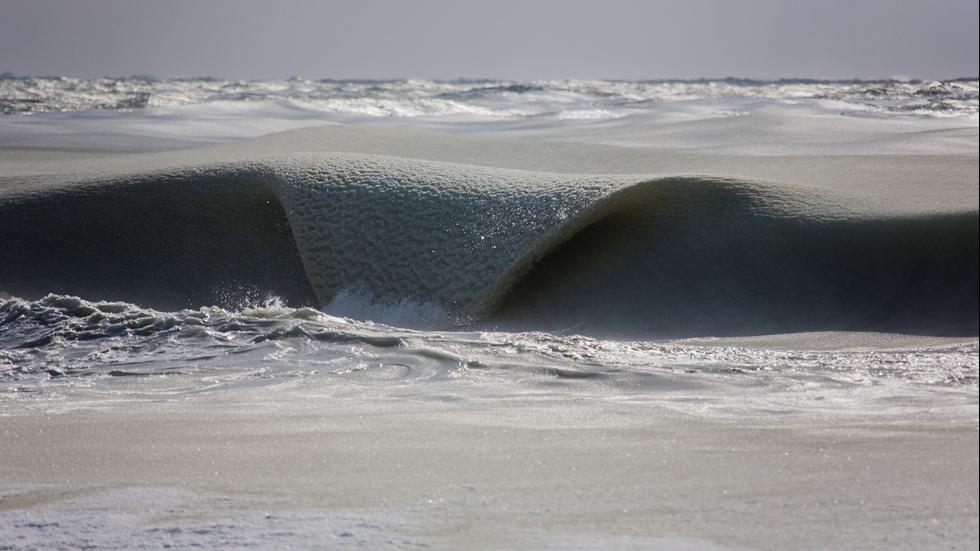While it might seem that climate change is responsible for bringing record cold to some areas of the United States this winter, scientists at ETH Zurich and the California Institute of Technology have shown that global warming actually tends to reduce temperature variability.

Over the past two winters, repeated periods of extreme cold led to record low temperatures in across the eastern US. Niagara Falls froze in parts, leaving photographers and residents breathless. Ice flows formed on Lake Michigan and in parts of Massachusetts, ocean surf froze to a slushy consistency and rolled to the shore in semi-solid waves. Such low temperatures had become rare in recent years, prompting pictures of blizzard besieged cities to make their way around the world raising the question of whether climate change could be responsible for these extreme events.
The theory relates to the polar jet stream, a strong wind high in the atmosphere. The jet stream is driven by temperature differences between the warm tropics and cold polar regions. It was thought that the increased warming of the Arctic in recent years had weakened the jet stream, resulting in it becoming "wavier." With warmer air from the Arctic pushing on the stream and weakening it, the result could be greater fluctuations in temperatures in the mid-latitudes of the eastern United States. Since a weak jet stream is much wavier than a strong one, these directional variations were considered the cause of the extreme cold snaps.
Scientists at ETH Zurich and at the California Institute of Technology, led by Tapio Schneider, professor of climate dynamics at ETH Zurich, have come to a different conclusion however. Using climate simulation computer models and theoretical arguments, they theorized that in most places these extreme temperature fluctuations would decrease as global warming increases. Cold snaps will not be as severe as they have been the past two winters. Additionally, their frequency will be reduced because as fluctuations decrease, the variations in temperatures become less severe and the extreme highs and lows do not happen as much.
The study deviated from the previously held theory because the models showed that higher latitudes are indeed warming faster than lower ones, which means that the temperature difference between the equator and the poles is decreasing. Extrapolating that data to a situation where the temperature differences no long exist means that air masses would have the same temperature, regardless of whether they flow from the south or north. In theory there would no longer be any temperature variability. Such an extreme scenario will not occur, but it illustrates the scientists' theoretical approach.
The team used a highly simplified climate model and examined various climate scenarios to verify their theory. It showed that the temperature variability in mid-latitudes indeed decreases as the temperature difference between the poles and the equator diminishes. Climate model simulations by the Intergovernmental Panel on Climate Change (IPCC) showed similar results: as the climate warms, temperature differences in mid-latitudes decrease, and so does temperature variability, especially in winter.
Temperature extremes should become less common, but this does not mean there will be no temperature extremes in the future. "Despite lower temperature variance, there will be more extreme warm periods in the future because the Earth is warming," says Schneider. The researchers limited their work to temperature trends.
But what about the jet stream? Schneider shrugs off the idea: "The waviness of the jet stream that makes our day-to-day weather does not change much." The more important factors are changes in the north-south difference in temperatures.









